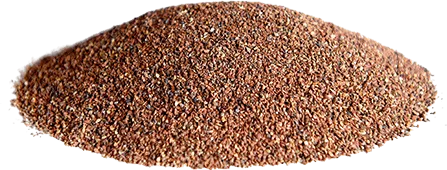
| Product Name | MgO (%) | SiO2 (%) | Al2O3 (%) | Fe2O3 (%) | CaO (%) | Loi (%) | BD (g/cm3) | Package |
| DBM85 | 85 MIN | 7.0MAX | 0.7MAX | 0.6MAX | 5.0MAX | 0.8MAX | 3.10MIN | TON BAG (1.25) |
| DBM90 | 90 MIN | 4.8MAX | 1.0MAX | 0.7MAX | 4.0MAX | 0.6MAX | 3.15MIN | TON BAG (1.25) |
| DBM92 | 92 MIN | 4.8MAX | 1.0MAX | 0.7MAX | 3.5MAX | 0.5MAX | 3.15MIN | TON BAG (1.25) |
85%-92% Dead burned magnesia
85%-92% Dead burned magnesiais mainly made of natural magnesite ore with 46% content, which is calcined by high temperature kiln at about 1400℃-1800℃.
Application: Dead burned magnesia is mainly used as raw material for making magnesia bricks and producing amorphous refractory materials. The finished products are used in steel making, electric furnace bottom and ramming furnace.
The main varieties of dead burned magnesia have 85%-92% content, these varieties are mainly selected 46.5% to magnesite, sintered kiln calcination heating to 1400-1800 ℃ Mg(CO3) completely decomposed, generating magnesite, become hard reddish-brown dead burned magnesium, it has a high refractorability. Dead burned magnesia is mainly used for magnesia brick, steelmaking, electric furnace bottom and ramming furnace lining.
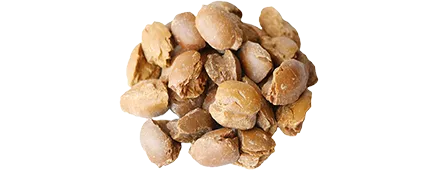
| Product Name | MgO (%) | SiO2 (%) | Al2O3 (%) | Fe2O3 (%) | CaO (%) | Loi (%) | BD (g/cm3) | Package |
| DBM95 | 95 MIN | 2.0MAX | 0.5MAX | 0.9MAX | 2.0MAX | 0.1MAX | 3.18MIN | TON BAG (1.25) |
| DBM96 | 96 MIN | 1.5MAX | 0.5MAX | 0.5MAX | 2.0MAX | 0.2MAX | 3.2 MIN | TON BAG (1.25) |
| DBM97 | 97 MIN | 1.5MAX | 0.5MAX | 0.2MAX | 1.5MAX | 0.2MAX | 3.25 MIN | TON BAG (1.25) |
94%-98% Dead burned magnesia
94%-98% Dead burned magnesia is made of natural super-grade magnesite ore. It is made by light burning, fine grinding, pressing balls and calcining in ultra-high temperature oil shaft kiln. It is a high-quality raw material for brick making and uncertain refractories.
The main varieties of dead-burned magnesia have 96% content and 97% content. These kinds of dead-burned magnesia mainly use magnesite ore with more than 46.5% of the content. When heated to 1400-1800°C by sintering kiln, Mg(CO3) is completely decomposed., to generate periclase, which becomes hard reddish-brown dead-burned magnesia, which has high refractoriness. Dead burnt magnesia is mainly used for magnesia bricks, steelmaking, electric furnace bottom and ramming furnace lining.
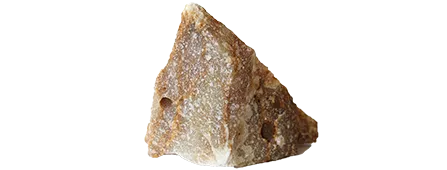
| Product Name | MgO (%) | SiO2 (%) | Al2O3 (%) | Fe2O3 (%) | CaO (%) | Loi (%) | BD (g/cm3) | Package |
| FM94 | 94MIN | 2.5MAX | 0.6MAX | 1.0MAX | 2.0MAX | 0.3MAX | 3.4MIN | TON BAG (1.25) |
| FM95 | 95MIN | 1.5MAX | 0.6MAX | 1.0MAX | 2.0MAX | 0.3MAX | 3.4MIN | TON BAG (1.25) |
| FM96 | 96MIN | 0.9MAX | 0.2MAX | 0.8MAX | 1.2MAX | 0.2MAX | 3.45MIN | TON BAG (1.25) |
| FM97 | 97MIN | 0.7MAX | 0.2MAX | 0.8MAX | 1.2MAX | 0.2MAX | 3.48MIN | TON BAG (1.25) |
| FM98 | 98MIN | 0.5MAX | 0.15MAX | 0.5MAX | 1.0MAX | 0.1MAX | 3.48MIN | TON BAG (1.25) |
Fused magnesia
Fused magnesiais a general term for the products of magnesia raw materials such as magnesite after high temperature treatment to the degree of sintering. The main varieties have 94%-98% content. Using high-temperature equipment such as shaft kilns and rotary kilns for one-time or two-step calcination, the magnesite fired with natural magnesite as raw material is called sintered magnesite; the magnesite is smelted with electric arc furnace as raw material to achieve molten state cooling The final form is called fused magnesia; the one made by extracting magnesia from seawater is called seawater magnesia. Magnesia is one of the most important raw materials for refractory materials, and is used to manufacture various magnesia bricks, magnesia-alumina bricks, magnesia-carbon bricks, magnesia-chrome bricks, ramming materials, furnace repair materials, etc.
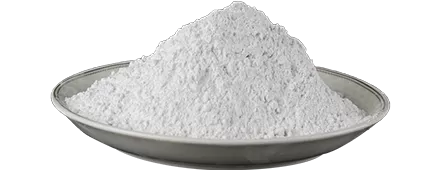
| Product Name | MgO (%) | SiO2 (%) | Al2O3 (%) | Fe2O3 (%) | CaO (%) | Loi (%) | BD (kg/cm3) | Package |
| CCM85 | 85MIN | 5.0MAX | 0.5MAX | 0.4MAX | 2.0MAX | 6.0MAX | TON BAG (1.25) 50KG/BAG | |
| CCM90 | 90MIN | 3.5MAX | 0.5MAX | 0.4MAX | 2.0MAX | 5.5MAX | TON BAG (1.25) 50KG/ BAG |
Caustic Calcined Magnesite
Caustic calcined magnesia (CCM) is reactive form of MgO produced by firing magnesite at temperatures between 600°C - 1000°C. Mainly used in: Agricultural applications, Hydrometallurgical processes, Pulp and paper, Construction and Sorel cement, Chemicals and pharmaceuticals industry, Environmental applications, Glass industry.
Application:
Construction: ·Industrial Flooring ·Ceramic tiles, boards & panels ·Abrasives
Industrial: ·Hydrometallurgy ·Pulp & Paper
Specialties: ·Glass making ·Friction materials
Agri-business: ·Animal Nutrition ·Fertilizers ·Agriculture
Enviromental: ·Soil decontamination ·Waste neutralization ·Water treatment ·Flue gas treatment
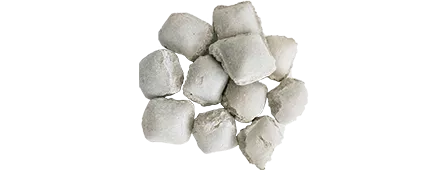
| Product Name | MgO (%) | SiO2 (%) | Al2O3 (%) | Fe2O3 (%) | CaO (%) | Loi (%) | BD (kg/cm3) | Package | ||
| LIGHT BURNT MAGNESIA BALL 60 | 60MIN | 5MAX | 0.5MAX | 1.0MAX | 2.5MIN | 30MAX | TON BAG (1.25) | |||
| LIGHT BURNT MAGNESIA BALL 65 | 65MIN | 5MAX | 0.5MAX | 1.0MAX | 2.5MIN | 30MAX | TON BAG (1.25) | |||
| LIGHT BURNT MAGNESIA BALL70 | 70MIN | 5MAX | 0.5MAX | 1.0MAX | 2.5MIN | 30MAX | TON BAG (1.25) | |||
Light burnt magnesia ball
Light burnt magnesia ball is made of magnesium oxide as the main raw material, adding water and binder at the same time, stirring and pressing under high pressure.
Light burnt magnesia ball is mainly used as the composition regulator of converter slag splashing. Because the slag splashing requires proper viscosity and fire resistance, reasonable slag composition is the key to realize the slag splashing.
Generally slag can not be sprayed directly to protect the furnace. A certain amount of magnesia ball is added to adjust the slag. Since MgO is a kind of high melting point mineral, the melting point is 2800℃, the increase of MgO content in slag will increase the viscosity of slag and improve the fire resistance.
The slag is easy to combine with the lining, forming an effective slag protection layer on the lining, improving the life of the lining and reducing the consumption.

| Physical And Chemical Indicators | |||||
| Brand Properties | MD92 | MD95 | MD97 | MD98 | |
| Bulk densiy(g/cm3) | 2.90 | 2.95 | 3.00 | 3.00 | |
| Refractoriness under load T2(℃) | 1550 | 1650 | 1700 | 1700 | |
| Apparent Porosity(%) | 18 | 16 | 15 | 15 | |
| Cold Crushing Strength(MPa) | 55 | 60 | 70 | 80 | |
| Thema shock resistance 950deg air cool (times) | 10 | 10 | 10 | 10 | |
| Composition(%) | MGO | 92 | 95 | 97 | 97.5 |
| CaO | 2.5 | 2.0 | 1.6 | 1.2 | |
| SiO2 | 3.5 | 2.5 | 1.2 | 0.6 | |
Magnesia brick
Features:
Magnesia Brick has high refractoriness, usually refractoriness above 2000℃.
Good high temperature fire resistance under load
Has excellent slag wear resistance and higher bulk density
Lower apparent porosity
Lower impurity content
Applications:
Magnesia Brick is mainly used for furnace lining, furnace bottom and furnace wall, oxygen converter permanent lining, non-ferrous metal smelting furnace, high temperature tunnel kiln, calcined magnesia and cement rotary kiln lining, furnace bottom and furnace wall, glass furnace regenerative lattice Bricks, etc.

| Physical And Chemical Indicators | ||||||||
| STEEL LADLE | ||||||||
| Brand Properties | Chemical Properties(%) | Physical Properties | Main Application | |||||
| MgO | FC | Al2O3 | AP(%) | BD(g/cm3) | CCS(MPa) | HMOR(1400℃X0.5hr) | ||
| LF 8 BI | 90 | 8 | 2 | 4 | 3 | 45 | 8 | Bottom Impact |
| LF 8 BN | 90 | 8 | 2 | 4 | 3 | 45 | 6 | Bottom Non Impact |
| LF 10 BC | 88 | 10 | 2 | 4 | 3 | 45 | 8 | Bottom Conical/Splash Pad |
| LF 12 MP | 86 | 12 | 2 | 4 | 3.05 | 45 | 10 | Metal Zone Purging |
| LF 12 MN | 86 | 12 | 2 | 5 | 3.05 | 40 | 6 | Metal Zone Non Purging |
| LF 14 SP | 84 | 14 | 2 | 3 | 3.1 | 40 | 10 | Slag Zone Purging |
| LF 14 SN | 84 | 14 | 2 | 3 | 3.1 | 40 | 8 | Slag Zone Non Purging |
| LF 13 FB | 85 | 13 | 2 | 5 | 3 | 40 | 6 | Free Board |
Magnesia carbon brick
Product Details
Magnesia Carbon Brick has excellent resistance to spalling, rust and excellent oxidation resistance. It can be used in electric furnaces, the second ladle, etc., and is widely popular in the steelmaking industry. This product is mainly used in the converter lining, which is in direct contact with molten steel and molten slag. It has the advantages of high strength, strong slag resistance, good thermal shock stability and high refractoriness.
Advantages
Magnesia Carbon Brick has proper residual expansion, low thermal conductivity and better insulation performance than magnesium aluminum carbon brick. This brick has been used in the ladle refining slag line and has achieved good results. It is also used in the lining part of AC electric arc furnace, DC electric arc furnace, converter and other components.
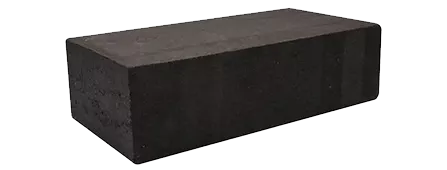
| Brand Properties | RMC-22 | RMC-16 | RMC-12 | DMC-22 | DMC-16 | DMC-8 | |
| Apparent Porosity(%) | 15 | 15 | 15 | 16 | 17 | 18 | |
| Bulk Density(g/cm3) | 3.25 | 3.20 | 3.20 | 3.15 | 3.0 | 2.95 | |
| Cold Crushing Strength (MPa) | 50 | 50 | 50 | 40 | 40 | 40 | |
| @ 1400℃ Thermal Linear Expansion(%) | 1.8 | 1.5 | 1.2 | 1.8 | 1.5 | 1.2 | |
| 950℃(times)Thermal Shock Resistance air cool | 60 | 55 | 50 | 40 | 40 | 40 | |
| @0.2MPa Refractoriness Under Load(℃) | 1700 | 1700 | 1700 | 1700 | 1650 | 1600 | |
| Chemical Composition(%) | MgO | 55 | 65 | 75 | 55 | 65 | 75 |
| Cr2O3 | 22 | 16 | 12 | 22 | 16 | 8 | |
| SiO2 | 1.5 | 1.5 | 1.5 | 2.0 | 2.0 | 2.5 | |
| Main Applications | Rotary & Shaft Kiln AOD COD RH EAF & Ladle Nonferrous Metal Furnace Hot-blast furnace Glass kiln | ||||||
Magnesia chrome brick
Features
Good thermal shock resistance
Excellent slag wear resistance
Good cold compression strength
High temperature resistance and high fire resistance
High-grade chrome ore raw materials
Lower impurity content
Applications
Magnesia Chrome Brick is mainly used in the metallurgical industry, such as the construction of flat-bottom furnace roofs, electric furnace roofs, refining furnaces outside the furnace, and various non-ferrous metal smelting furnaces.

| Index Item | RS-A | RS-80 | RS-85 | RS-88 |
| MgO(%) | 86 | 85 | 88 | 90 |
| Al2O3(%) | 5 | 7 | 6.5 | 6.5 |
| SiO2(%) | 3.2 | 4 | 2.4 | 1.2 |
| CaO(%) | 1.6 | 1.5 | 1.3 | 1.2 |
| Fe2O3(%) | 3.7 | 1.7 | 1.4 | 1.0 |
| Apparent Porosity(%) | 16~20 | 17 | 17 | 17 |
| Density Bulk(g/cm3) | 2.85~3.0 | 2.93 | 2.93 | 2.94 |
| Cold Crushing Strength(Mpa) | 41 | 50 | 50 | 55 |
| 0.2Mpa Under Load Refractoriness(℃) | ≥1550 | 1610 | 1650 | 1700 |
| Thermal Shock Resistance(1100°℃, water, quenching cycle) | 3~6 | 3~6 | 3~6 | 3~6 |
Magnesia alumina brick
Introduction
Magnesia aluminum bricks use magnesia as the main raw material, magnesia brick and aluminum oxide as the co-milled fine powder as the matrix, the alkaline products which are fired at high temperature are called magnesia alumina bricks.
Magnesia aluminum refractory bricks have good thermal shock resistance, high mechanical strength at high temperatures and high softening temperatures.
Magnesium aluminum fire brick has good slag resistance, high temperature performance and thermal stability, and the price is cheaper than magnesium spinel.
Application
Magnesium aluminium bricks used in ladle, mixed iron furnace, glass kiln regenerator, steel reverberative kiln roof, steel making furnace permanent lining and refractory industrial high temperature kiln.
NAVIGATION
+86 189 5430 6666
+86 189 5430 6666
Building B, Kerry Centre Enterprise Square, No.125 Qingnian Street, Shenhe District, Liaoning Province, China.
